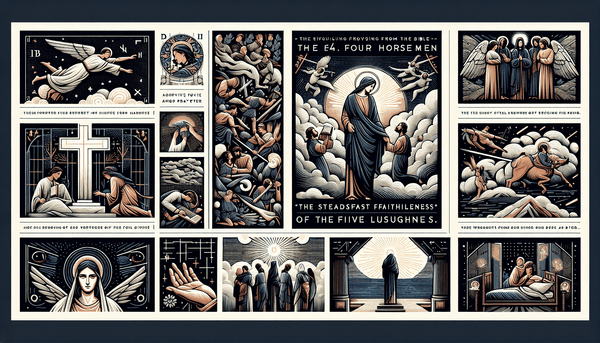Navigating Sin, Salvation, and the Sovereignty of God: Insights from Biblical Narratives

Limited-Time Bonus:
Free 7-Day Devotional Guide!
Join 10M+ Christians Experiencing Deeper Faith



In order to use the app you will need an iPhone or Android smartphone.
In the tapestry of biblical literature, narratives that convey themes of sin, redemption, and divine communication are particularly resonant. They challenge believers to reflect on their own lives, and offer profound insights into the human condition. This article delves into the story of the adulterous woman in John 8, the foreboding vision of the Four Horsemen of the Apocalypse, the intimate act of prayer, and the essence of placing trust in God's unwavering faithfulness. Contextually related Bible verses are not merely historical records but are living words that continue to guide and shape the path of the faithful.
Bible Chat App
The #1 Bible App for biblical answer
Join 10M+ Believers Growing In Faith With Bible Chat
4.9
Average Rating
|Over 5 Million Downloads


